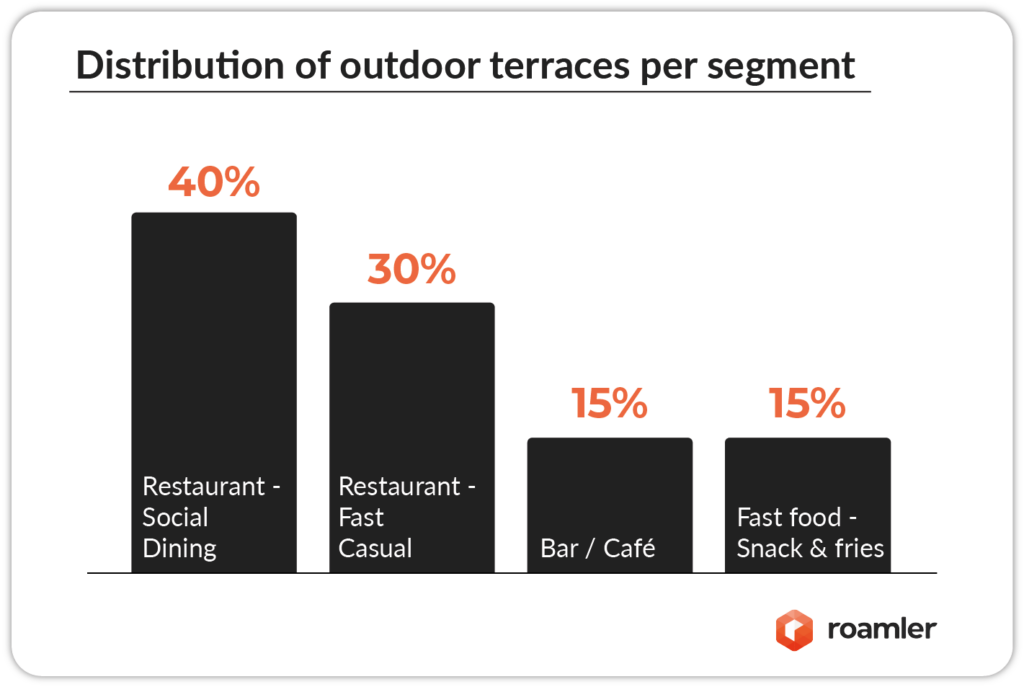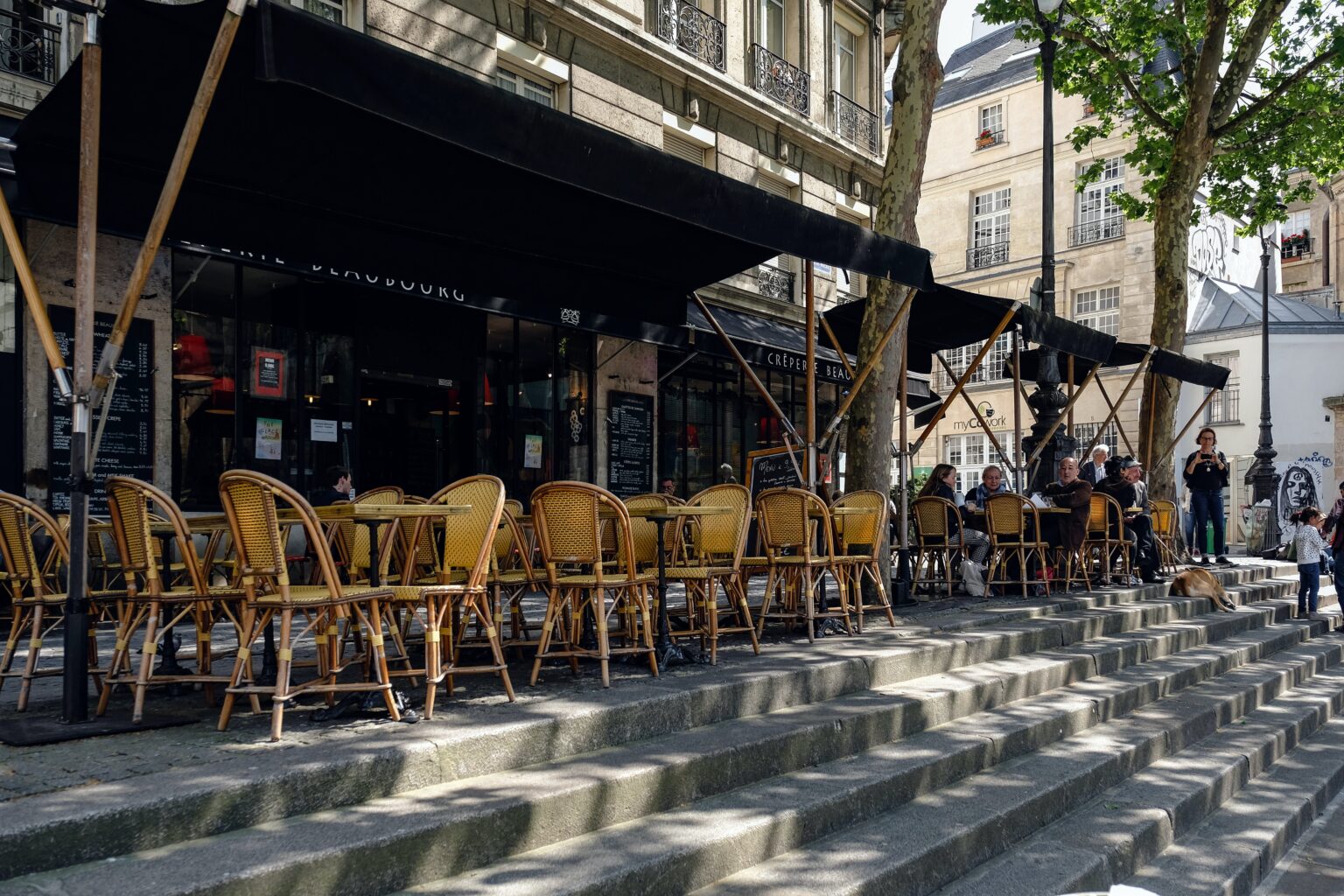Having a terrace offers various advantages for dining and drinking establishments. It increases seating capacity, allowing more guests to be accommodated. Serving more guests usually translates to higher revenue due to increased volume. Additionally, it enhances visibility from the outside, attracting more potential guests. Furthermore, it can contribute to differentiation from other dining & drinking establishments.
As mentioned in previous articles, the Dutch dining and drinking segment faces various challenges, resulting in a decrease in the number of establishments in 2023. Terraces, considering the aforementioned benefits, can be an asset to stimulate further growth.
In this article, we explore which segments have the most terraces, in which Dutch regions terraces are most developed, and which menu items are most common on the terrace.
How many locations in the Netherlands have a terrace?
According to our location database, there are over 25,000 outlets within the dining and drinking segment that have an outdoor terrace. This means that 55% of the total number of outlets in this segment have an outdoor terrace, indicating that it is an integral part of the Dutch culinary landscape.
Number of outdoor terraces per segment
Social dining restaurants (establishments with full service, an extensive menu, and a higher price range) stand out within the different segments. Of the total number of terraces (55% of 25,000 outlets) within the dining and drinking segment, social dining terraces hold a 40% share. In this segment, approximately three-quarters of the outlets have an outdoor terrace, making it the segment with the most terraces compared to others.
The café/bar and snack & fries segments both have a 15% share of the total number of terraces in the dining and drinking segment. The remaining 30% is distributed among other segments such as fast-casual restaurants, lunch/delicatessens, fast food (shawarma & kebab), and coffee shops.
This distribution highlights the versatility of terraces. They are not only suitable for dinner but also cater to consumers seeking a more informal atmosphere for snacks and/or drinks in a pub setting.


Roamler newsletter
Get the latest insights, innovations, and opportunities when it comes to efficiency for your business.
Regional differences in the distribution of terraces
Not surprisingly, North Holland leads in the absolute number of establishments with terraces. However, of the total number of establishments (within the dining and drinking segment) in North Holland, only 50% have a terrace. The provinces of Gelderland and North Brabant are the frontrunners, with almost 60% of their total dining and drinking establishments equipped with a terrace. In contrast, South Holland exhibits one of the lowest percentages, namely below 50%.
Differences in terrace menus
Analyzing menu data collected at these establishments provides interesting insights into consumer preferences. Craft beers emerge as the most recurring item, present on 39% of all menus. This underscores the Dutch appreciation for unique and artisanal beverages. ‘Regular’ beers closely follow craft beers, with a presence of 36% on all menus, indicating a strong beer culture in the Netherlands.
Conclusion
It appears that social dining restaurants predominantly have many terraces. Furthermore, dining and drinking establishments in the provinces of Gelderland and North Brabant most frequently feature a terrace. On the map of locations with an outdoor terrace, beer (both regular and craft beer) is mentioned most frequently.
While the Dutch dining and drinking segment currently faces many challenges, terraces can still be a solution to generate more volume and, consequently, more revenue.
